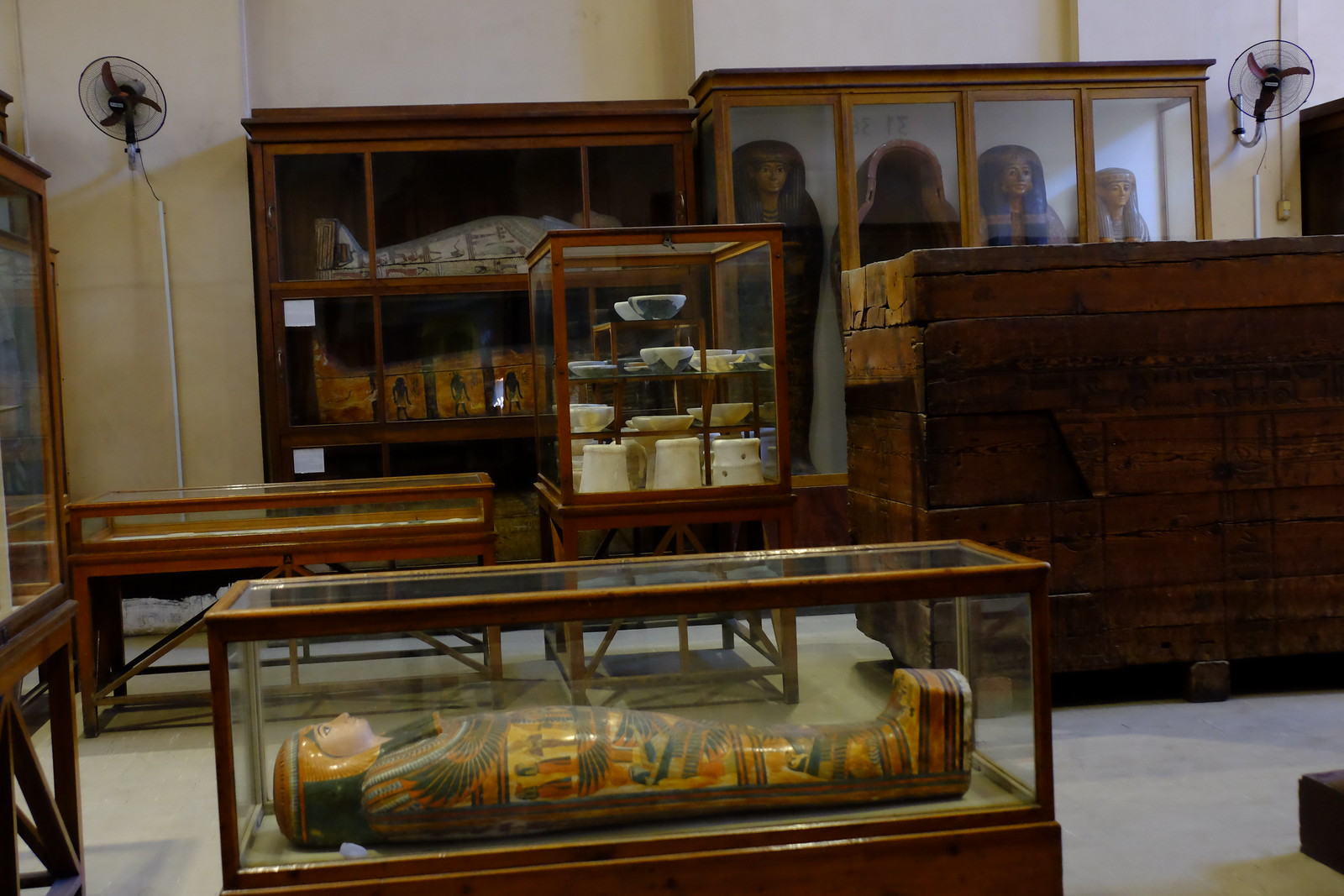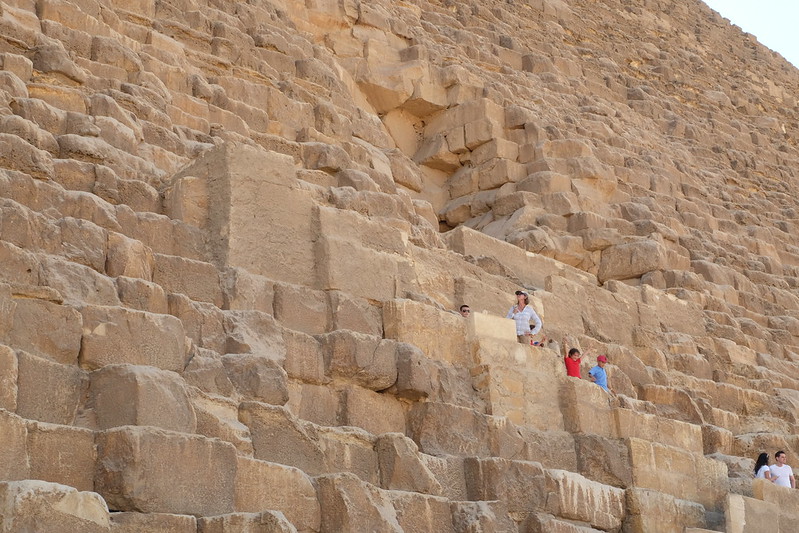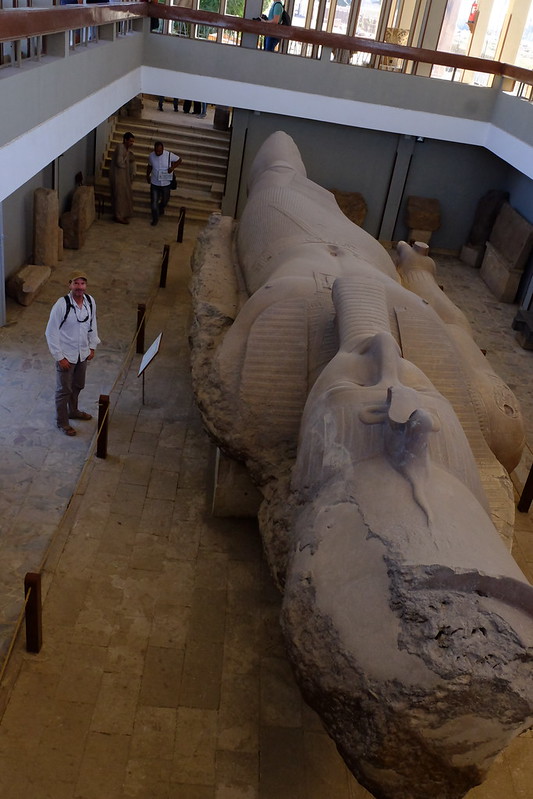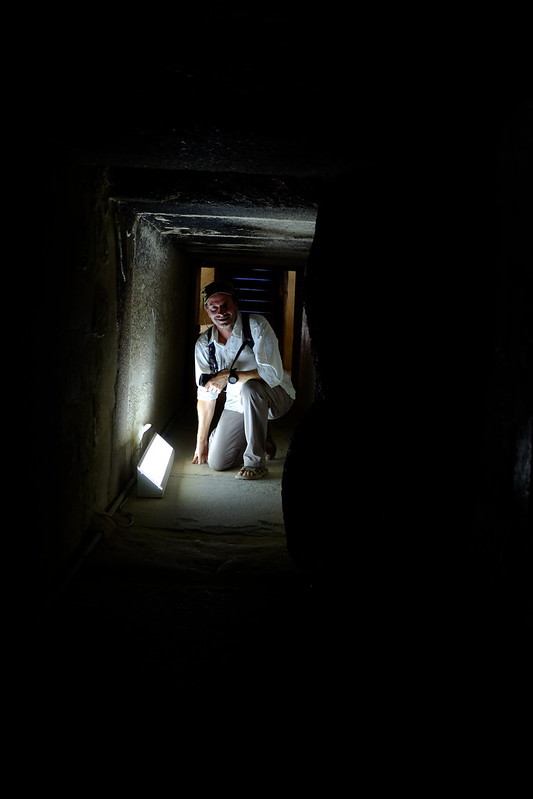Because right now is a great time to visit Egypt, or anywhere for that matter where massive numbers of tourists are shying away for one reason or another. Because visiting in the winter allows you to miss the blistering summer heat of north Africa. Because we needed a quick escape from the plague chasing us in Madagascar. Because of all this and more, we decided that Egypt would be our next destination.
We spent our first few days in the upscale Cairo neighborhood of Zamalek as it was my first introduction to the Middle East and wanted to get a little emotionally grounded before we set off. This allowed us to slowly explore some of Cairo, including possibly the best archeological museum in the world, eat some of the local foods and just in general get habituated to the new climate and culture. Once situated in Cairo, we were then able to take a few trips, including to Giza and the Great Pyramids and then later head south to upper Egypt.
The Egyptian Museum is situated right next to Tahrir Square where just a few years ago the world saw the massive protests that occurred. But today it was as peaceable a walk as you could imagine, if you can imagine taking a stroll down a busy New York avenue at rush hour, that is. The museum, an amazing tomb itself. It was busting at the seams trying in vain to house its overwhelming number of artifacts that have been recovered throughout the Nile valley. It’s hard to describe. You firstly need to try to picture that the time period being displayed is roughly 3,000 years. That’s three-thousand-years worth of artifacts. No other civilization of such influence has lasted even a third as long. And as it existed in an extremely arid climate, the museum is literally overflowing with relics. So much so they are in the process of building an even larger, more engaging one closer to the pyramids at Giza. After this first overwhelming visit I thought it would be a great idea to revisit after seeing the Upper Egypt tombs and temples to serve as a trip bookend and perhaps better appreciate what magnificent items I saw with the greater context.
 Egyptian Museum taken from Tahrir Square.
Egyptian Museum taken from Tahrir Square.
 This is merely one example of how priceless treasures are crammed into the museum.
This is merely one example of how priceless treasures are crammed into the museum.
Rather than just taking a hard done day trip to Giza, we booked a room there for a couple of nights which afforded us to explore the Great Pyramids and the Sphinx at our leisure.
We followed that up with a guided tour of the even older pyramids in the nearby Saqqara area to get a broader understanding of what went down back in 2650 BC.
 The Great Sphinx, aka the Sphin-cus
The Great Sphinx, aka the Sphin-cus
The Sphyncus: Communication, as is sometimes comical. We were staying somewhat near a Kentucky Fried Chicken franchise, which we were using as a landmark when grabbing taxis to and from. And so it was when we left dinner one evening we hailed a taxi.
“Kentucky Fried Chicken?” I asked as soon as I opened the taxi door and peered my head in.
He gave me a blank stare so I tried again a little slower.
“Kentucky – Fried – Chicken?” I said again, but this time taking care to enunciate each word.
Another blank stare, and as I was about to try another rendition he perked up and said with every bit of hopefulness, his voice rising at the end, “Sphin-cus?”
“Sphin-cus,” we replied reassuringly, nodding acknowledgement.
With our destination agreed upon we happily jumped into the back of the taxi and he more or less took us to our hotel, which also happened to be near the entrance to the Great Sphinx.
Turn up your volume on this video to experience a realistic Cairo cab ride!
I’m not sure what to say about the pyramids. They are really big and they are really tall with really really big rocks. They are almost better seen from a distance, being so iconic. Up close they are so unfathomable that I think your mind sort of glazes over how impressive they are. Then consider the precision. Again, unfathomable. You cannot slide a piece of paper anywhere between the stones, verifying how straight all the edges must be. Then the shape of the pyramid itself. It has been measured and the lengths of each side are within about a mere inch from one another. The required precision might all seem self evident considering that the pyramids have stood for so many years, but it’s one thing to know a thing, it’s quite another to see it firsthand. It helped a bit to have seen the structures the Incas had built with similarly sized stone blocks, and then to think about the time difference. The Incas did their work somewhere around 1200-1500 AD, but the Egyptians did their work 4,000 years earlier. See how your mind went kind of numb there for a second and just passed over that number? Lets try it again: Four-thousand-years-earlier! Anyway, I belabor. We continued our investigations into this ancient world by hiring a tour guide and driver to take us to Saqqara. The pyramids at Saqqara predate those at Giza, but are no less impressive. They don’t have the extra height, but they are perhaps even more interesting as you can almost see the ancients learning from prior mistakes before creating the master works at Giza. I even went into one, the Red Pyramid, but Denise chickened out… Egyptologist indeed! We also went into some tombs that contained wonderfully preserved carvings and paintings. All over 5,000 years old too. Mind-blowing. After Saqqara and Giza we flew south to Luxor where you can’t help but have your mind blown away by more ancient awesomeness. But I’ll let Denise tell that story in the next post.





































4 replies